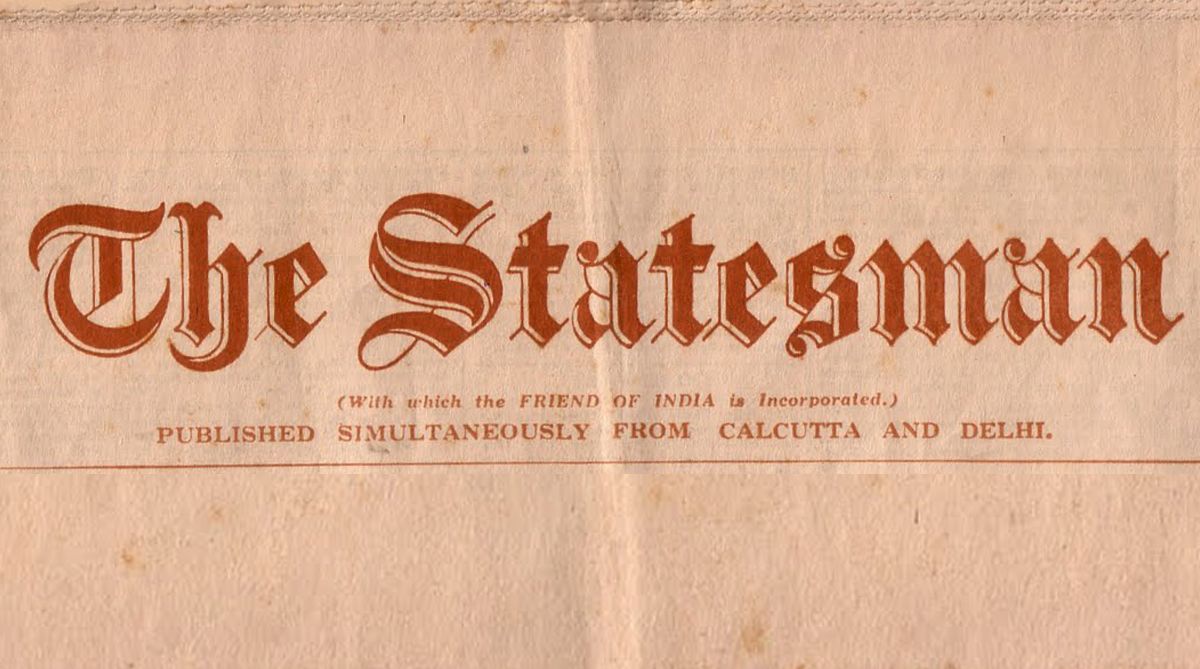A New Day, A New Dawn
There is a surprise for the readers. A special Poila Boishakh gift from none other than West Bengal chief minister Mamata Banerjee. Who has written a piece for this special edition.
On this day a century ago, these were some of the news items The Statesman readers got to read about India and the world

OCCASIONAL NOTE
A day or two ago it was Jacobabad which was revelling in a heat wave giving temperatures ten degrees or so in excess of the normal; now it is Calcutta which is apparently making a bid for supremacy in the matter of torridity as well as in other directions, although it might surely be content to leave the palm in this respect to its moré favoured rival, Delhi.
In any case, the present heat wave, which gave us a minimum temperature more than eight degrees in excess on Wednesday night, and probably gave us a maximum temperature at least ten degrees in excess yesterday afternoon, serves as a perhaps needed reminder that Calcutta retains, among the all too numerous changes of the past few years, a capacity for heat which is second to few places in Northern or Southern India.
Advertisement
The reminder, we say, is timely, because only a few weeks ago we had the thermometer steadily five to eight degrees below the average, and this may have led in some quarters to an uneasy suspicion that the climate of Bengal was steadily approximating to that of the so-called temperate zone.
Such a development would obviously have been inimical to at least one of its most important textile interests, and even should it have a corresponding influence upon the political fervour of the extremists the one result could hardly be regarded as adequate compensation for the other.
MADRAS HIGH DEATH RATE
A report of the Health Officer to the Madras Corporation on abnormally high death rate in the city during the past twelve months is published. The report says: On analysing the cause of death we find that there is a perceptible rise in mortality from respiratory diseases and from diarrhoea and dysentery. Under other causes the rise is slight.
The increase is uniformly visible in every division of the city and not restricted to any district or part of the city. Not the least important factor is the economic strain of living which makes people easily susceptible to disease and death, even upon very slight provocation, this susceptibility being specially marked amongst the large class of poverty-stricken people made poorer on account of the prolonged war.
BELVEDERE JUTE MILL CASE
The Belvedere Jute Mill case came on for hearing on Thursday before Mr. B.D. Hazra, Sub-divisional Officer of Howrah. In one case Mr. Morgan, Manager of the mill, and three of his men are charged with rioting; and in another case Upendra Samanta and three other mill hands are charged with being members of an unlawful assembly.
Mr. C.C. Singha, Government Pleader, Howrah, appeared for the prosecution in both cases. Mr. S.N. Mullick, vakil, appeared for Mr. Morgan, while Babu Tripura Charan Roy, vakil, represented the mill hands accused.
Mr. Mullick filed an application praying for the transfer of the case against Mr. Morgan to the file of a European Magistrate, as Mr. Morgan claimed the right of a European British subject.
The pleader for the mill hands also filed an application for adjournment on the ground that his clients would move the higher court for the transfer of the case to the file of another Magistrate. The hearing was adjourned until the 1st proximo.
THE INFLUENZA EPIDEMIC
The influenza epidemic in Karachi is apparently less severe in type than in Bombay or Calcutta. So far as can be ascertained no European has been affected and no deaths have been reported.
About fifteen per cent of the office staffs of business establishments throughout the city are absent. The Telegraph and Post Offices are little affected and the service is in no way disturbed.
Most of the victims hitherto have arrived by sea or come in contact with arrivals in the course of business or otherwise. The Port Trust have suffered little, but over 100 coolies working for stevedores and at other jobs at Keamari are ill.
THE GERMAN LOSSES
A semi-official statement says: While the enemy losses are frightful ours are quite light, especially east of Rheims. If we were allowed to state the figure it would be most reassuring.
Whereas in the previous offensive we had to send for reinforcements from other parts of the front, this time those on the spot sufficed to sustain the shock. This was partly due to the constant afflux of Americans every day reducing the disproportion of forces.
Advertisement